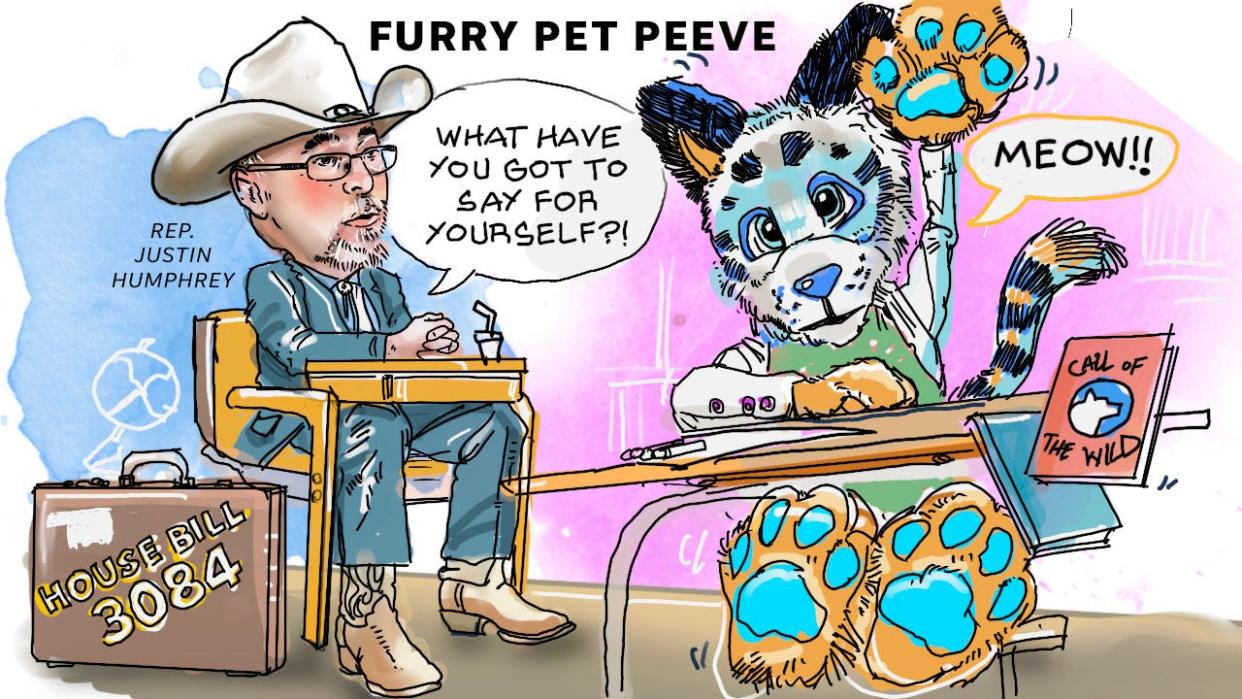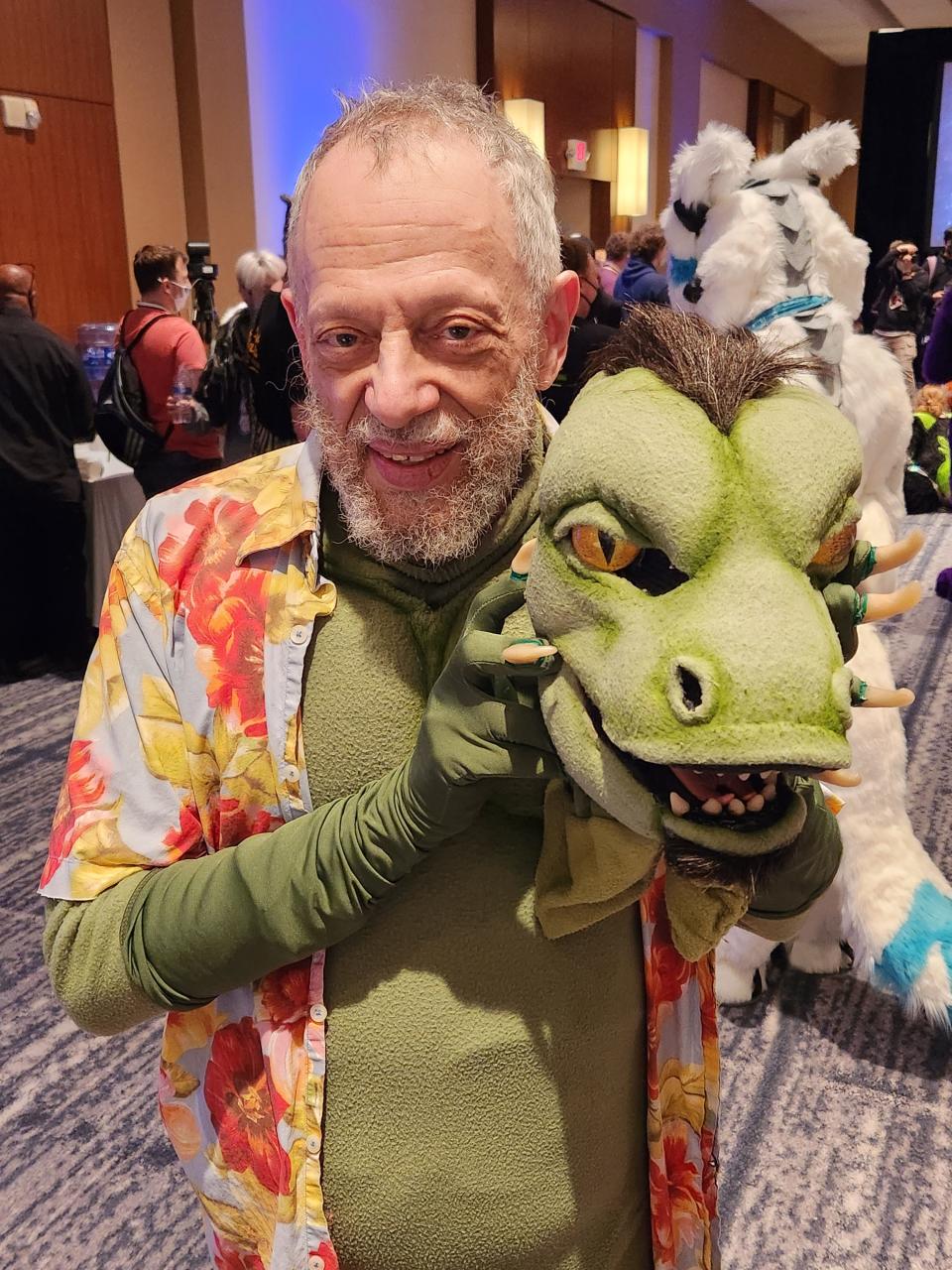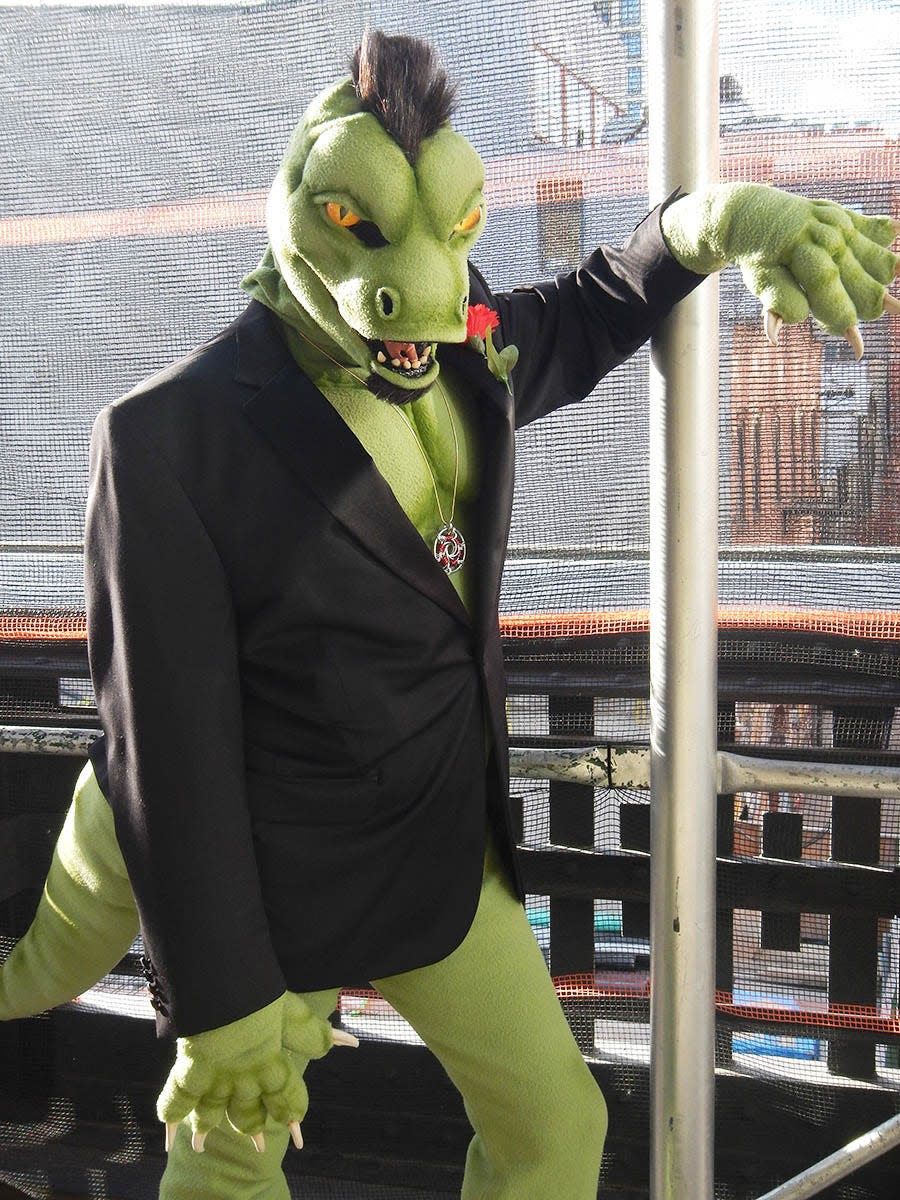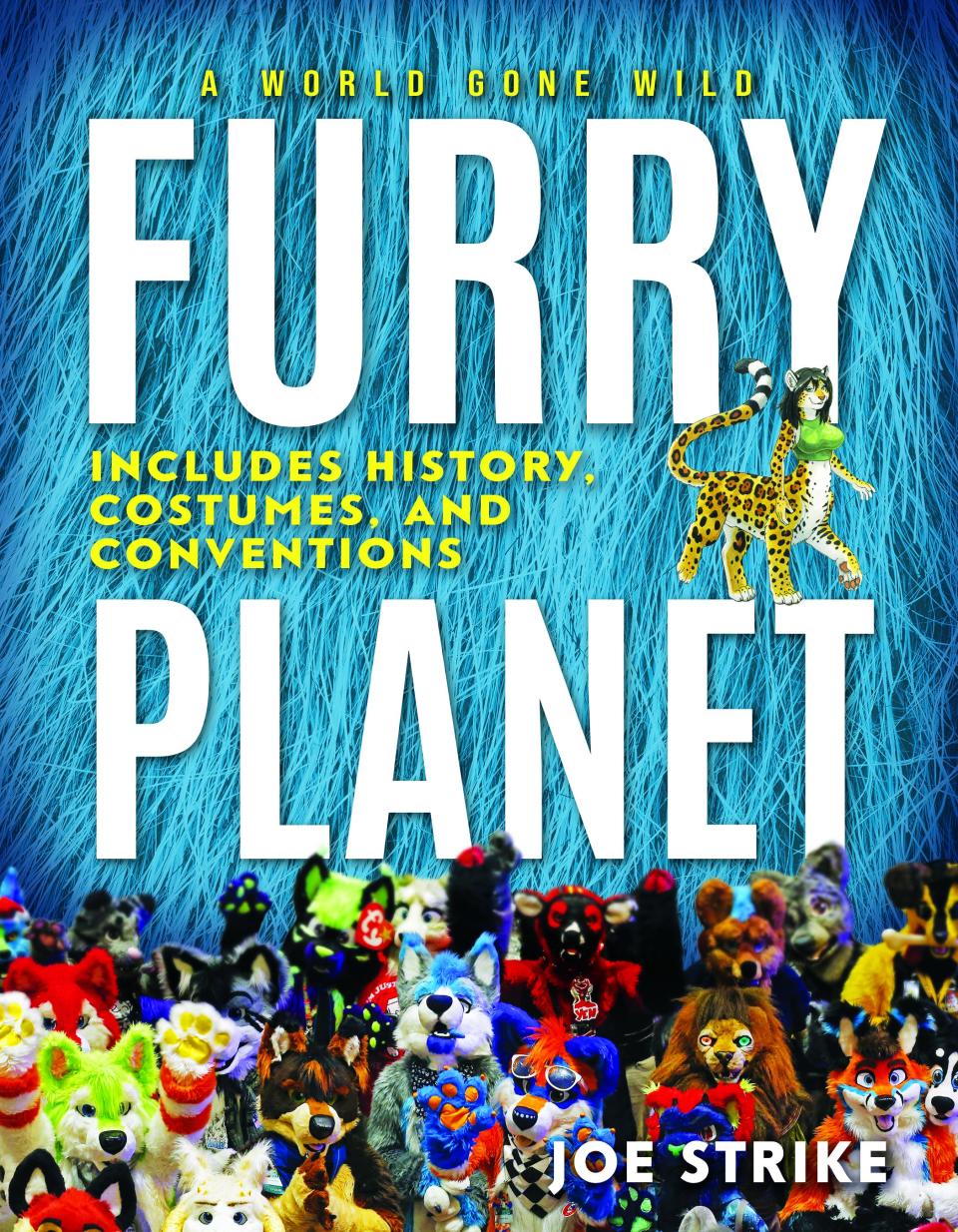Furry: Oklahoma Rep. Justin Humphrey continues long-discredited 'furries use litter boxes'

This past summer Pittsburgh’s streets were filled with thousands of animals.
More: Oklahoma bill would require 'furries' be picked up from school by parents, animal control
Not actual, escaped-from-the-zoo animals, but “furries,” a subculture of people you may have heard about, people — like me — who are fascinated by fictional, anthropomorphic animals. We were there for our annual “Anthrocon” convention in the city that’s been our home since 2006.
Furries (or as we sometimes call ourselves, “furs”) love imaginary characters who combine human and animal appearance or abilities; they may be storybook animals like Peter Rabbit, mythical ones like dragons or unicorns and, in particular, cartoon critters.
Over four days, 13,644 furries (including more than 2,500 wearing the elaborate fursuits we’re known for) delighted a city that has warmly embraced the furry community. Hundreds of residents traveled downtown to watch the annual fursuit parade, whose participants posed for photographs afterward alongside beaming locals in the post-parade block party. (Those locals may have also been beaming in gratitude for the millions of dollars Anthrocon injects into the Pittsburgh economy every year.)

A middle-age woman approached one fursuiter and told him how happy she was that the furries were in town. “Every year you turn the city into a fantasyland — and it’s something I really needed right now.”
Those fursuits are handmade (and expensive!) wearable works of art, custom-created by furry artisans to make tangible the “fursonas,” the animal alter-egos furs have invented for themselves. For a few days, fursuiters can take a vacation from the human race and transform into someone else, a grander self of their imagination: swashbuckling foxes, dapper rabbits, bon vivant walruses, multi-colored felines, feathered avians. During conventions I become “Komos,” a sinister yet strangely alluring Komodo dragon sporting a boutonniere on his tuxedo lapel.

Similar scenes take place across the United States and Canada almost every weekend in cities large and small: Chicago, San Jose, Philadelphia, Denver, Dallas, Toronto to name a few, and Boston (where I just spent the Jan. 19 weekend with 4,500 of my fellow furs), not to mention cities in South America, Europe, Asia and the far east.

Not everyone gets it, though — in particular, a certain Oklahoma politician who has dredged up, once again, the long-discredited “furries use litterboxes” fraud in a preposterous bid for attention. In December, Republican Rep. Justin Humphrey introduced “House Bill 3084,” which reads in part:
Students who purport to be an imaginary animal or animal species, or who engage in anthropomorphic behavior commonly referred to as furries at school shall not be allowed to participate in school curriculum or activities. The parent or guardian of a student in violation of this section shall pick the student up from the school, or animal control services shall be contacted to remove the student.
More: What is a furry? Subculture targeted in Oklahoma bill has nothing to do with litter boxes
“Animal control services” — really?
Every few years a new, imaginary “menace” comes along to purportedly endanger children. In the past it was comic books, rock music or video games; today it’s furry, supposedly encouraging kids to “identify as” animals and use litterboxes in place of toilets. In reality, the furry community is home to many gay, transgender or autistic children and adults who experience the support, validation and acceptance denied them elsewhere.
Humphrey’s proposed bill may not have earned him the attention he desired; instead, he’s made himself the target of well-deserved mockery. There’s little chance he’ll be invited to Oklahoma City’s AnthroExpo — unless the convention mistakes him for Disney’s dim-witted ursine “Humphrey the Bear.” (Latest word from the human Humphrey: He’s now calling for furries to be “neutered”!)
Regarding politicians making fools of themselves, Ron DeSantis’ attempt to make the company’s diversity-friendly policies a punching bag for his fizzled presidential run should be a warning to other politicians that America has genuine problems in need of solving — and people dressing up as pretend animals isn’t one of them.

Joe Strike, a long-time furry and expert on the subculture, is the author of "Furry Planet: A World Gone Wild." Besides being a certified “greymuzzle,” Strike is a writer and producer who has created hundreds of TV promotions for channels including Bravo and Sci-Fi and worked with talents like Stan Lee, Ralph Bakshi, and the cast of "Mystery Science Theater 3000."
This article originally appeared on Oklahoman: Furry community is the latest imaginary 'menace'

